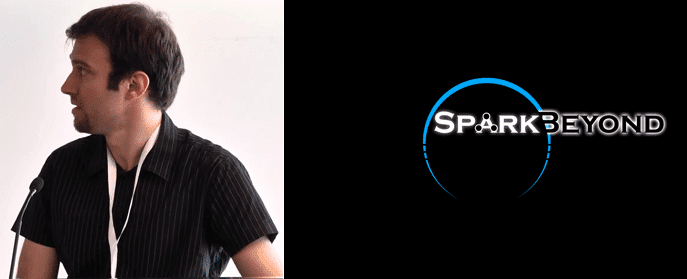I’ve been fortunate as of late to communicate with many young and budding emerging tech entrepreneurs in the past month (despite everything else going on here), and Sagie Davidovich is certainly counted among them. Still a young man, Sagie is founder and CTO of multiple companies (most recently in the domain of the “semantic web”), he’s now founder and CEO of SparkBeyond, a company aiming to revolutionize software and it’s adaptability.
(The full interview with Sagie is available in our podcast archives at Libsyn)
One of the topics that I covered with Sagie was his perspective on what separates emerging technology entrepreneurship from any other kind of entrepreneurial venture. In some respects, of course, “biz is biz,” and if you can design and sell vacuum cleaners, you can design and sell brain-machine interfaces (when that becomes legal…). However, Sagie covers a few of the factors that tend to make the experience of ET entrepreneurship unique.
First and foremost, as “emerging,” the technology does not have a firm and established footing in it’s application in the world. Though the technology may promise much in terms of it’s disruptiveness or it’s revolutionary impact on a field or domain, it has limited (if any) track record – and so is more of a “high risk, high reward” wager – almost by it’s very nature.
Second is the risk of adoption of the technology by potential clients, particularly enterprise. “It’s changing a bit now, but larger corporations are usually not early adopters because risk of a mistake or error is much higher for them.” Factoring in the ‘B to B’ adoption concerns, Sagie notes “When you’re building a company that is ‘B to C,’ the dynamics are totally different… and being emerging is potentially a way to differentiate yourself.”
Sagie sees much of the process of developing emerging technology as a process of finding new functionality, new levels of efficiency.
“Emerging technologies facilitate people to interact easier with their environment. It can be a new way to connect the dots, and makes us one more efficient and one step towards the singularity of our efficiency.”
He references Uber, as an example of helping humans increase their efficiency in their environment. The car, in this case, is part of the environment, and Uber (a app that connects people to taxis and transportation vehicles in real time) is an embedded network to improve the speed with which we can increase our goals.
This efficiency also applies to our communication, so much so that it sometimes makes communication unnecessary. Sagie references social networks like Facebook or Foursquare, where a single update can be posted, as opposed to contacting half-a-dozen friends and family members individually by a traditional call or even text. Using a computer analogy, Sagie mentions “this saves me at least a few operations.”
What additional networks will emerging technologies create for us in transportation, communication, power, etc…? What new shortcuts can be created in the networks that already exist? That’s the job of the entrepreneur.



















